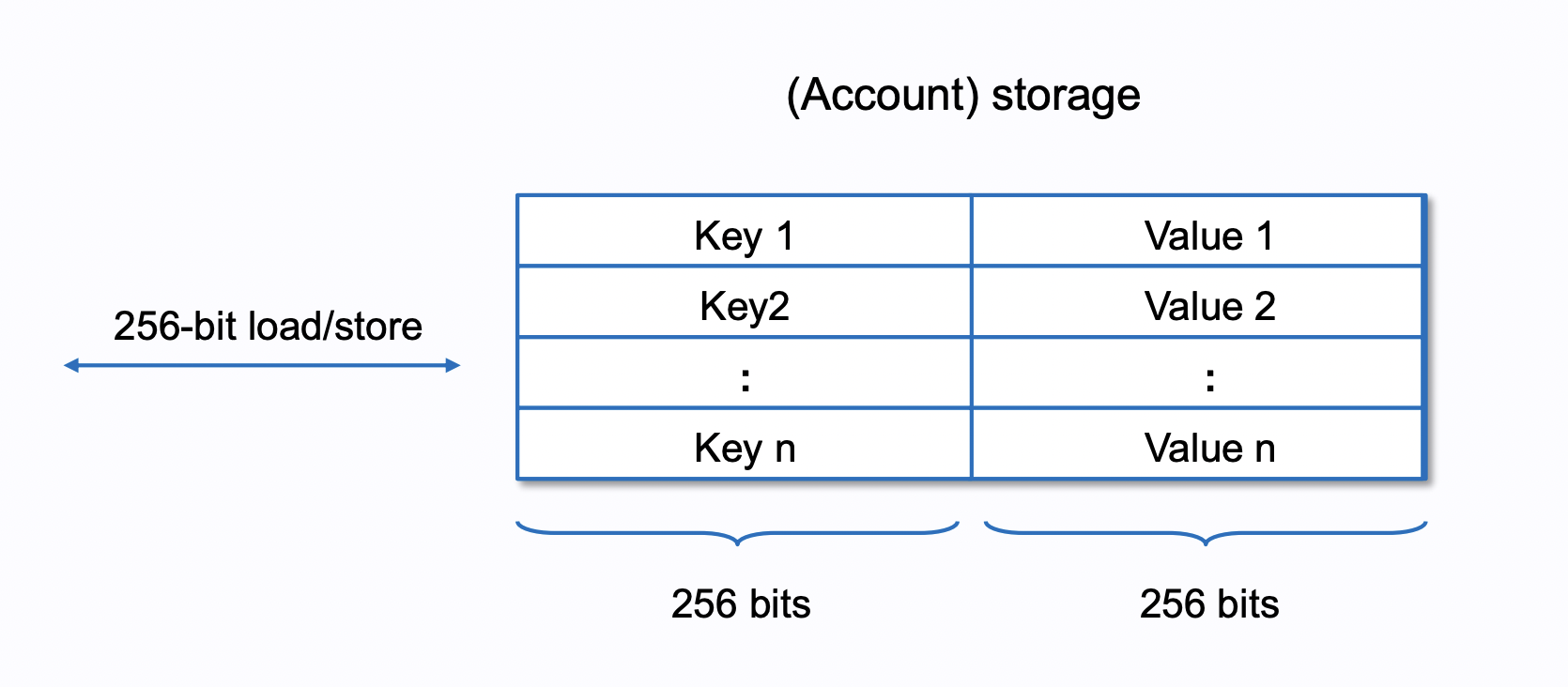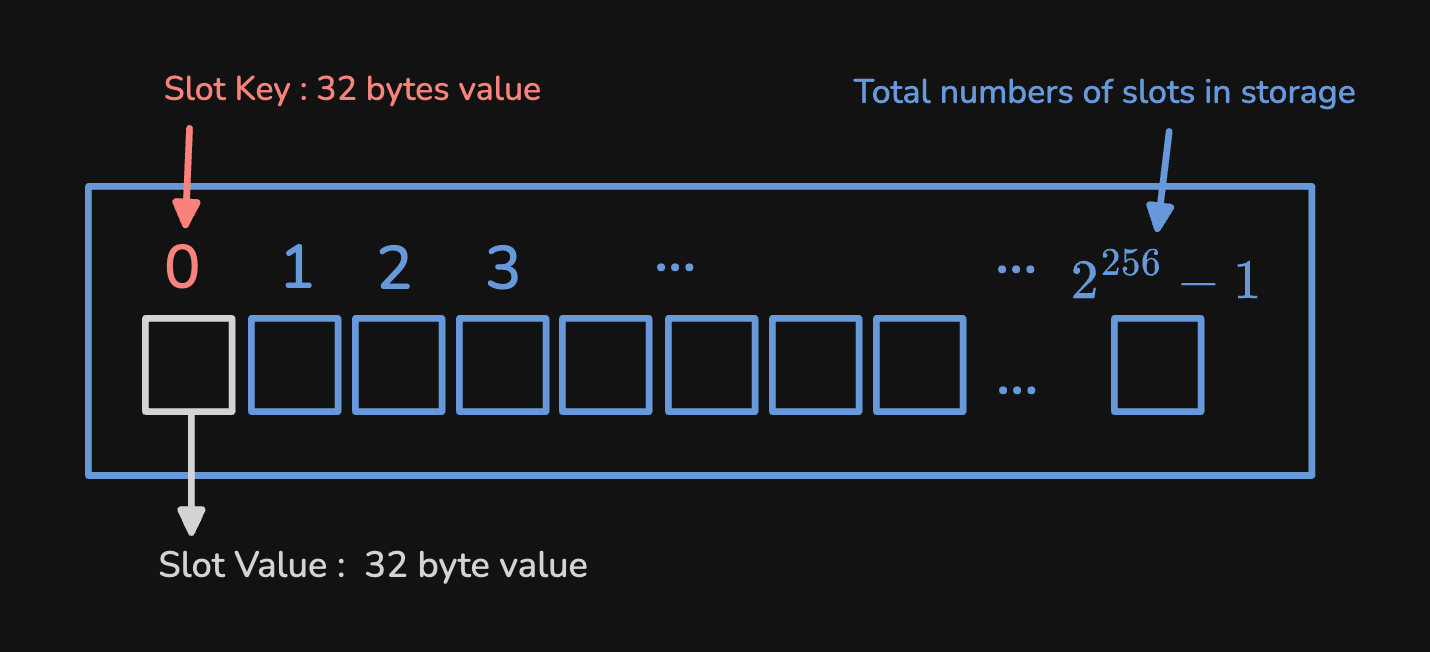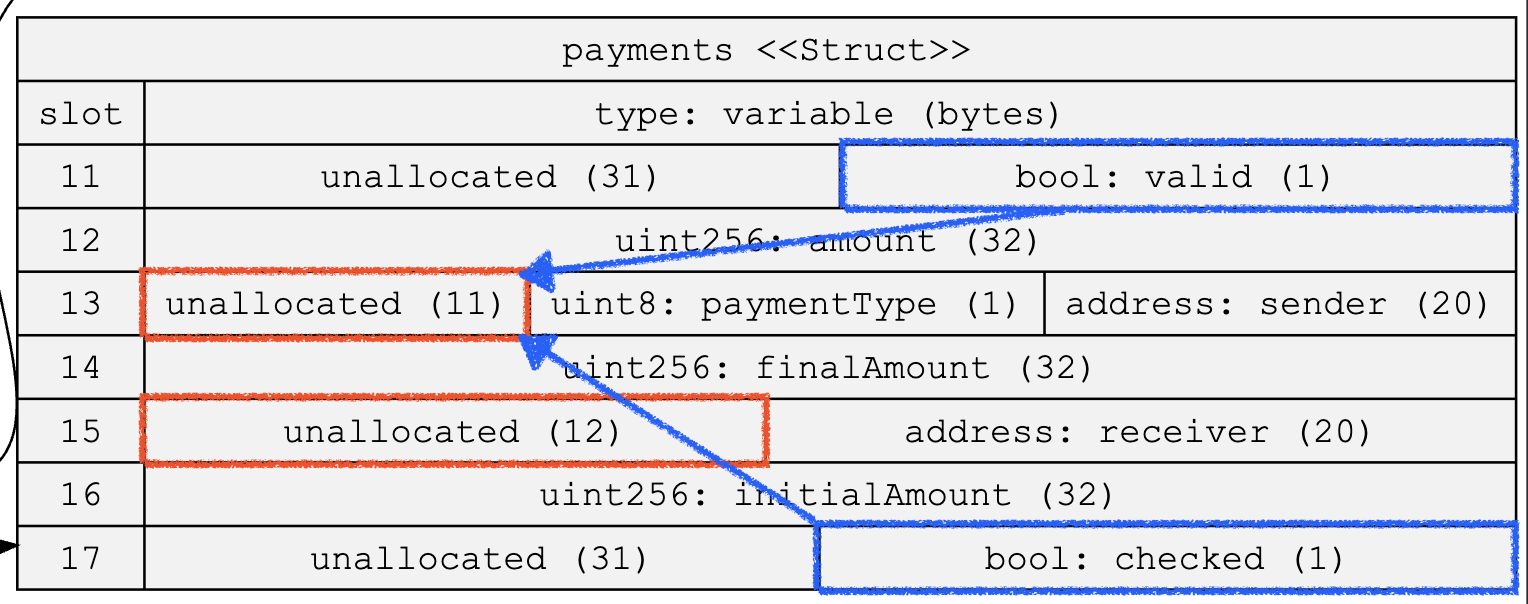Gas Optimization Basics: Reducing Contract Slot Usage

On the fourth day of participating in Encode Club, one part of our homework was to use the tool sol2uml to observe the Storage Slot usage within a contract and try to reduce the Gas used by the contract.
 Advanced Solidity Bootcamp HW4
Advanced Solidity Bootcamp HW4 contract Store {
struct payments {
bool valid;
uint256 amount;
address sender;
uint8 paymentType;
uint256 finalAmount;
address receiver;
uint256 initialAmount;
bool checked;
}
uint8 index;
uint256 public number;
bool flag1;
address admin;
mapping (address=>uint256) balances;
bool flag2;
address admin2;
bool flag3;
payments[8] topPayments;
...
So in this article, we will discuss how data in contracts is stored in the EVM Storage and how to minimize Storage usage to achieve Gas optimization.
Please note that the optimizations discussed in this article only target primitive types, such as uint/int, address, and bytes. Other types like structs, which are reference types, have different allocation methods in Storage and require separate discussion.
Outline
- EVM Storage Slots
- Why Optimize Storage Slots?
- How to Analyze Storage Slot
- The Example In The Homework
EVM Storage Slots
 From ethereum-evm-illustrated
From ethereum-evm-illustrated In smart contracts, each contract has its own Storage space. Storage is composed of key-value pairs, capable of storing up to 2²⁵⁶ pieces of data. In each pair, the key is used to query the corresponding data, while the value stores the actual data ( Hence the space storing the value is called a Slot ), both being 32 bytes in size.
 Storage Slots
Storage Slots Why Optimize Storage Slots?
In Gas optimization, a common and important practice is to reduce the usage of Storage Slots because the cost of reading and writing to Storage Slots is high. Especially when writing to a Slot for the first time, the Gas consumption is much higher than modifying an existing Slot. Therefore, saving Slot usage can reduce the Gas needed for deployment and transaction execution.
How to Analyze Storage Slot
To know how to save Slot usage, we first need to understand how data is stored in Storage. We know that each Slot is 32 bytes long, or 256 bits. Additionally, we need to know that the EVM tries to maximize the use of each Storage Slot’s space.
When a piece of data is placed in a Slot, if there is enough space left to store the next piece of data, the EVM will try to put both pieces of data in the same Slot. This action is called “ Slot Packing ” and is done by the Compiler for you. For example, when we store a uint32 piece of data, it occupies 4 bytes in a Slot.
contract StorageExample {
uint32 dataA;
}If we use the tool sol2uml to view the corresponding Storage Layout, it looks like this ( This tool was learned in the course and is very helpful for contract development ):
Next, if we declare a uint64 variable dataB after this variable, you will see the Storage Layout change to this:
contract StorageExample {
uint32 dataA;
uint64 dataB;
}
Big-endian
You will find that dataB is placed in the same slot0 as dataA, leaving 20 bytes of remaining space. Therefore, any data declared after this that is smaller than 20 bytes will also be placed in slot0. You will also notice that these declared data are right-aligned, not left-aligned.
In the EVM, there is a special rule for data storage: all data is right-aligned. This is like in a row of boxes, new data starts from the right. This arrangement is called “ big-endian ” in computer science, which mainly affects the storage of data like strings (string) or bytes (byte). Although the term sounds technical, it simply describes the rule of “where to start placing data”.
However, if we directly declare a uint256 data dataC, this data will be stored in slot1 because there is not enough space in slot0.
contract StorageExample {
uint32 dataA;
uint64 dataB;
uint256 dataC;
}
The Example In The Homework
Let’s go back to the contract provided in our initial homework, we can see that a struct type data is declared at the very beginning of the contract. However, we can skip the struct definition part for now because declaring a struct only defines the data structure and does not actually occupy Storage Slots. Let’s first observe the series of variable declarations at the beginning:
{
struct payments {
bool valid;
uint256 amount;
address sender;
uint8 paymentType;
uint256 finalAmount;
address receiver;
uint256 initialAmount;
bool checked;
}
uint8 index;
uint256 public number;
bool flag1;
address admin;
mapping (address=>uint256) balances;
bool flag2;
address admin2;
bool flag3;
payments[8] topPayments;
...
}The Storage Slot layout for the above type declarations looks like this:
 Storage slots example3
Storage slots example3 We can see that slot0 and slot2 each have some unallocated space, but it seems we cannot reduce Slot usage by placing data in other Slots. Next, we see the declaration of the Struct Array payments[8] topPayments.
As mentioned earlier, reference types have different storage methods in Storage, and they are stored in separate spaces. However, here we focus on how data is allocated to Slots. Basically, the data within each Struct is allocated to Slots in the order of declaration. So if we look at the Storage Layout of payment, it looks like this:
 Storage slots hw4 - payment struct
Storage slots hw4 - payment struct It is clear that there are two Slots that only use 1 byte each, so we only need to change the order of variable declarations to change the allocation position of these two bool values. The final result looks like this:
struct payments {
uint256 amount;
bool valid;
address sender;
uint8 paymentType;
bool checked;
uint256 finalAmount;
address receiver;
uint256 initialAmount;
}
 Storage slots hw4 after optimization- payment struct
Storage slots hw4 after optimization- payment struct 